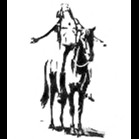Major forest fire Doi Suthep, Chiang Mai
-
Recently Browsing 0 members
- No registered users viewing this page.
-
Topics
-
Popular Contributors
-
Latest posts...
-
57
-
12
Report Senate Committee Seeks PM's Insight on Casino Bill as Confusion Reigns
Filled whith hoookers and what not? -
109
Healthy 1 year old girl dies of multi seizures less than 12 hours after receiving 6 vaccines
Yet another obscure website you have found? -
-
60
Trump Vows to Slash Drug Prices with New Executive Order
Makes you wonder why so many ex democrat voters voted for him. Maybe they saw his policies such as closing down the open borders as a good one. One could say it was POPULAR. -
122
-
-
Popular in The Pub
-

.thumb.jpg.3ee24d9400fb02605ea21bc13b1bf901.jpg)





.thumb.jpeg.d2d19a66404642fd9ff62d6262fd153e.jpeg)






Recommended Posts
Create an account or sign in to comment
You need to be a member in order to leave a comment
Create an account
Sign up for a new account in our community. It's easy!
Register a new accountSign in
Already have an account? Sign in here.
Sign In Now